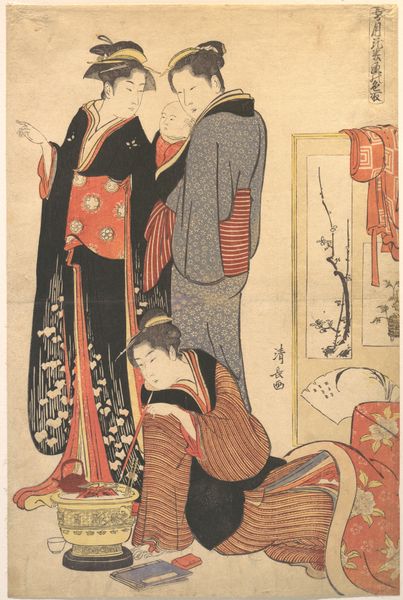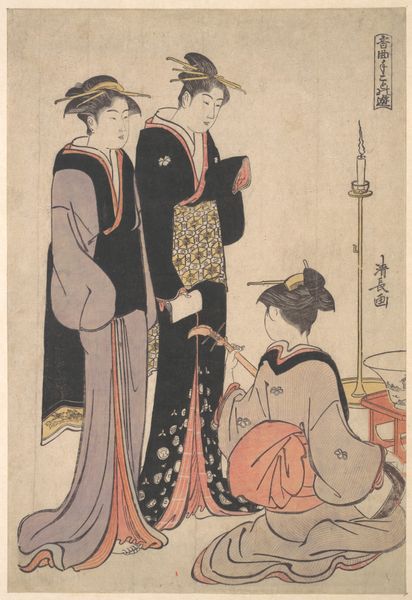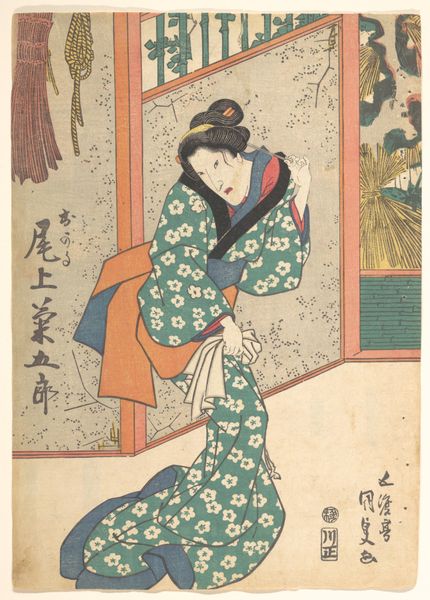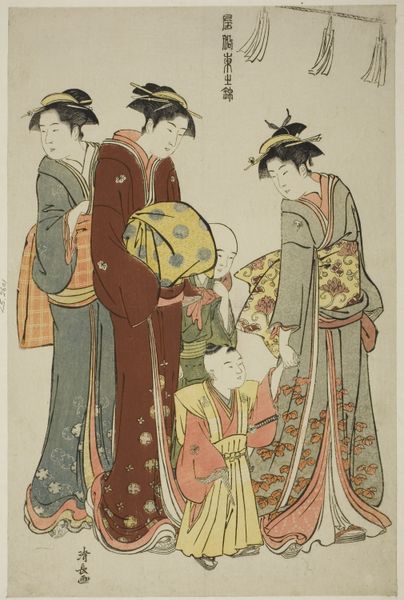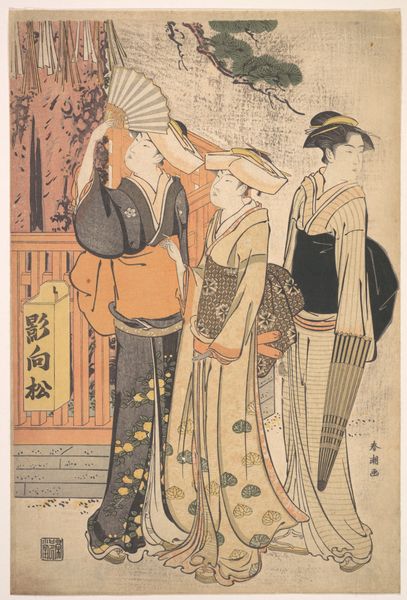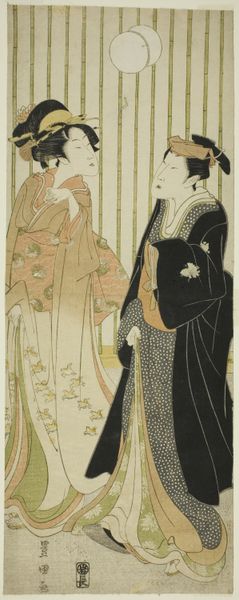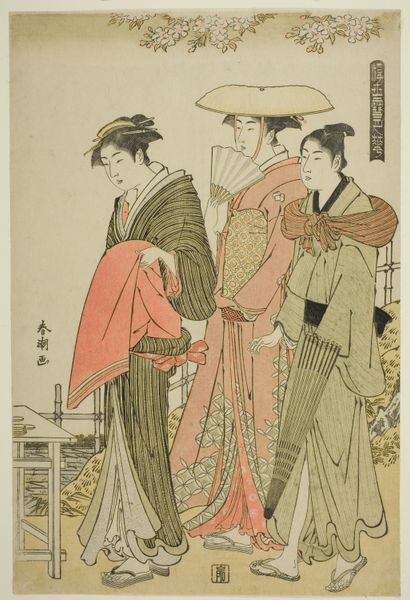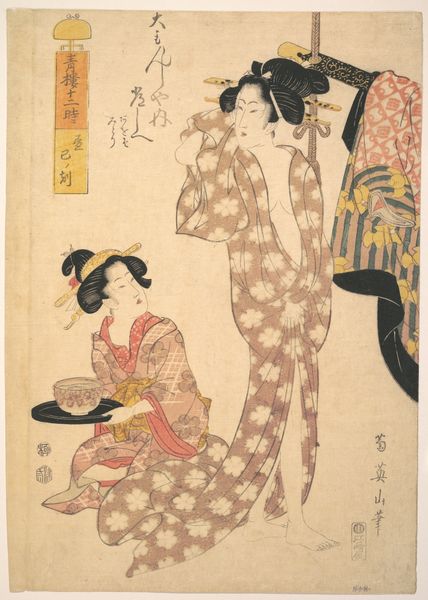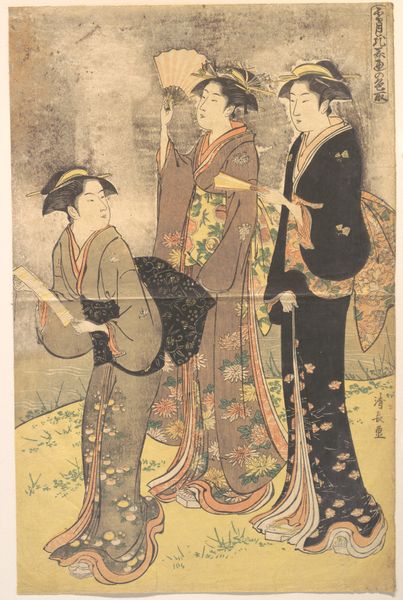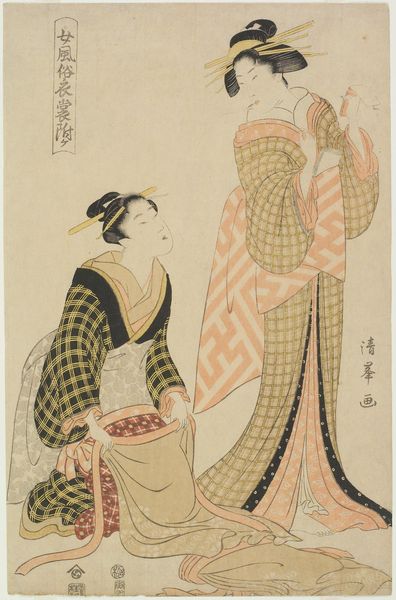
print, woodblock-print
#
portrait
#
ink painting
# print
#
asian-art
#
ukiyo-e
#
woodblock-print
#
genre-painting
Dimensions: 14 15/16 x 9 3/4 in. (37.9 x 24.8 cm)
Copyright: Public Domain
Editor: This woodblock print, "Three Geishas of Tachibana Street in Their Room," was created by Torii Kiyonaga in 1784. The figures have an arresting presence despite their muted environment. How do you interpret the symbolism in this Ukiyo-e print? Curator: Well, consider the geishas themselves as potent symbols of beauty, refinement, and artistic skill. Notice how their placement isn't just a snapshot, but almost a codified representation of social roles and expectations of women at the time. How does the mirroring action reflected in each woman echo broader cultural ideals? Editor: The geishas, especially the one looking in the mirror, do seem concerned with presentation and appearance, so are you suggesting the mirror itself holds meaning beyond vanity? Curator: Precisely! The mirror is not just a tool for self-inspection but a symbol of reflection—on societal roles, expectations, and even on fleeting beauty. And consider their garments. Do the patterns and colours seem chosen merely for aesthetics, or might they represent something deeper? Editor: The textile patterns…they feel less like random decoration, more like a language of their own. The flowers and geometric shapes must have significance, indicating status, season, or even aspirations? Curator: Exactly! The layered meanings within these seemingly simple details reveal a world where appearances and objects carried heavy symbolic weight. What, then, can we say about the absent men from this picture? Editor: That’s an important observation. In their absence, we still can gather so much information on what was valued through careful gestures, clothes, or arrangements. This feels a little less like portraiture, and more like symbolic representation. Thank you for revealing so much depth within the image! Curator: Indeed. And isn't it fascinating how artists use these layered meanings to connect us to the past, sparking our own interpretations of values through careful, historical contextualization?
Comments
No comments
Be the first to comment and join the conversation on the ultimate creative platform.
